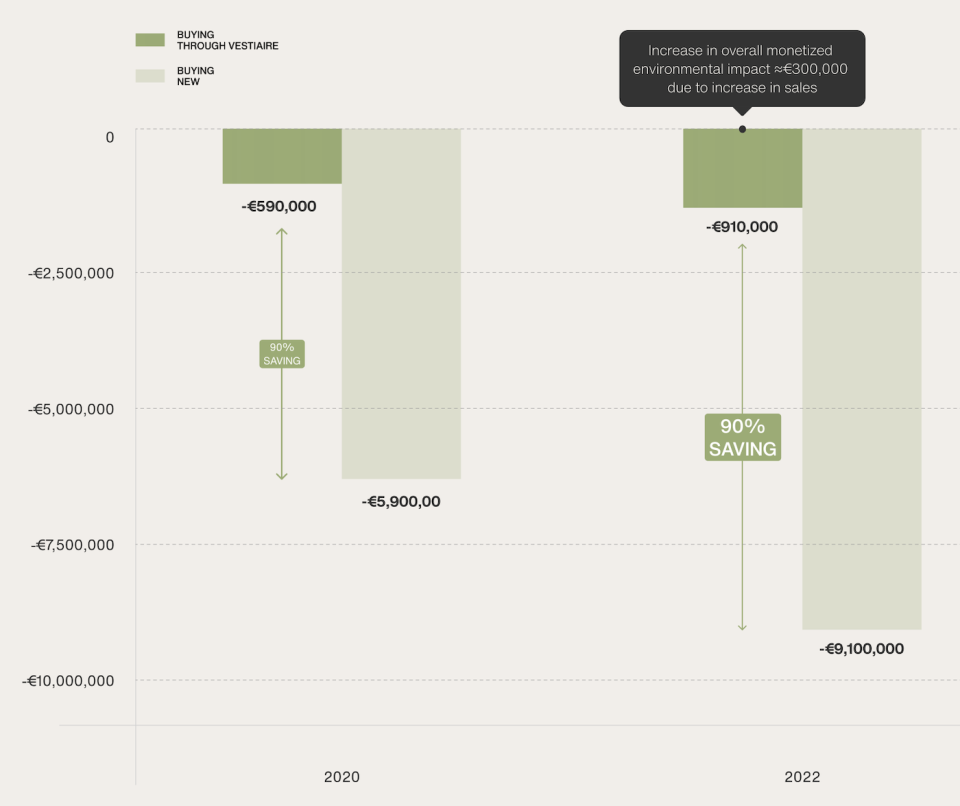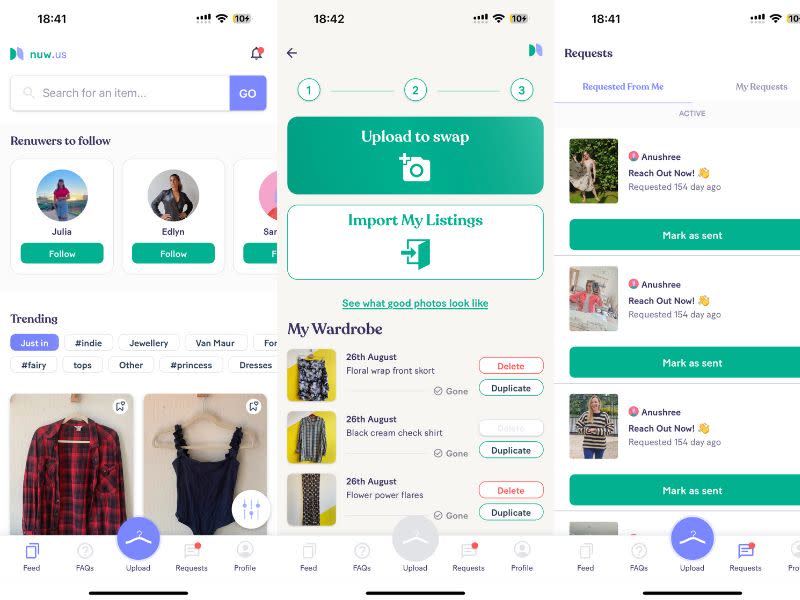85% of Vestiaire Resale Shoppers Buying Less But Better

In a world where consumers buy more clothes but wear them less, Vestiaire Collective wants to disrupt consumption behavior by changing how people buy.
The global fashion resale app’s second annual Impact Report revealed the extent to which resale platforms enable consumers to “upscale” their purchases—bringing some “much needed” disruption to the industry.
More from Sourcing Journal
New Report Highlights 'Quiet Luxury' Demand as Secondhand Trends Emerge
Sean Wotherspoon's Vintage Gap Collection Sells Out in One Day
“Our 2023 Impact Report tells an incredible story about the substantial impact we have achieved so far. As resale grows, we proudly lead the way by introducing socio-economic impact measurement,” Fanny Moizant, co-founder and president of Vestiaire Collective, said. “We have developed this report not as a beauty contest buy as a transparency exercise, going into all aspects of our business.”
Buying a used garment extends its life by 2.2 years on average, reducing its carbon waste and water footprint by 73 percent, according to Patagonia’s ex-CEO Ryan Gellert. Most sold items (82 percent) on Vestiaire Collective replaced a firsthand purchase—up 12 points from last year. This decision to buy used instead of new, and the environmental impact avoided by doing so, is what the B Corp. calls its “displacement rate.” A survey found that 85 percent of Vestiaire users are willing to buy fewer and better-quality items, with 70 percent of fashion consumers encouraged to take better care of their items thanks to their resale value. All to say that buying pre-loved items can reduce environmental impact 10 times over, the report found.
“Our unique circular business model not only sets us apart but also enables us to make a significant impact in driving sustainability within the fashion industry,” Max Bittner, CEO of Vestiaire Collective, said.
The company has calculated the environmental cost of every purchase on Vestiaire Collective through the monetization method, which translates an environmental question into one that consumers can easily understand to help them quantify their impact. It compares different types of effects in different local contexts to create a standard.

With that in mind, Vestiaire Collective has prevented almost three times more emissions than it generates, meaning it now has a net climate-positive impact without offsetting. Since 2009, the company has avoided 194,000 tons of CO2e, with one-fourth of that happening in 2022 alone. It has also reduced its carbon intensity. In 2022, Vestiaire Collective managed to stabilize its carbon intensity relative to its growth. Initiatives like reducing the carbon impact related to order delivery, reducing packaging impact and addressing office and warehouse energy use will help curb its impact.
Vestiaire Collective’s resale-as-a-service (RaaS) incentivizes brands and retailers to offer a high-end solution for their customers to sell back their pre-loved items, which are then sold on Vestiaire Collective through a dedicated shop. So far, 18,000 Mytheresa items have been resold on Vestiaire Collective since the launch of their partnership last summer. This year, the company partnered with Chloé to develop the first resale experience to use digital identification, given how designer items typically increase in value once they reach vintage status. The secondhand market is currently worth roughly 5 percent of the overall apparel, footwear and accessories sector and could grow to as much as 40 percent, the report found. Last year’s most popular designer brands on Vestiaire Collective included Moncler, Jacquemus and Alexander McQueen, while the top three luxury brands were Chanel, Gucci and Louis Vuitton.
Sustainability is the second and fastest-growing driver for Vestiaire Collective shoppers after circularity. Most sellers (84 percent) are inspired to give items a second life, the report found. Following the company’s decision to ban fast fashion last November, 70 percent of users switched to buying better quality brands. Now, Vestiaire Collective is lobbying with the EU to hold fast fashion companies accountable for their supply chains, waste management and textiles shipments to low-income countries. So far, 27 brands have been banned from the platform.
“Fashion is one of the world’s biggest polluting industries, and for too long the industry has encouraged consumer behaviors that are too much for the planet to handle,” Moizant said. “By helping consumers buy fewer, but better items of pre-loved clothing, we can push the industry to move towards circular business models that embrace a love for fashion while transitioning to sustainable, environmentally responsible practices.”
While resale is enjoying its moment in the sun, so is clothes swapping. The global clothing-changing app market is expected to grow at a significant CAGR of 5 percent from 2023 to 2030, according to A2Z Market Research.
Irish secondhand swapping platform Nuw recently expanded into the U.S. to disrupt the apparel re-commerce industry with a sustainable alternative to fast fashion.

Founder Aisling Byrne in 2021 pioneered Nuw’s “clothes as currency” business model, which today has an 83 percent recirculation rate—about five times higher than the resale and thrift store channels.
The app allows users to exchange old clothing for new-to-them (or sometimes brand-new) pieces. Users earn a gold or silver coin for reach item uploaded, which can then be redeemed for another item for 99 cents, plus shipping. Each time an item is exchanged, the “nuw” way to shop offsets an average of 25 percent of resources that would have been used to produce a new article. So far, with 34,000 items exchanged, approximately 500,000 gallons of CO2 and seven million gallons of water have been offset.

